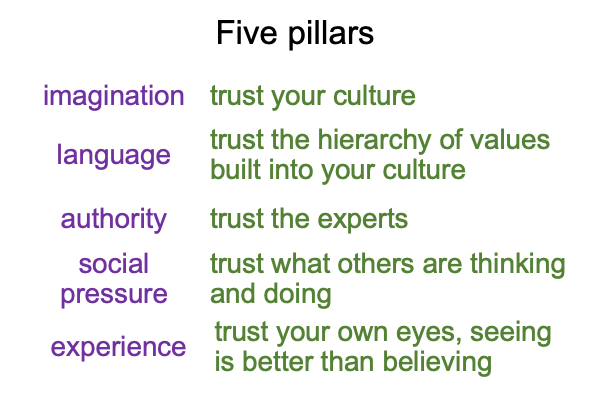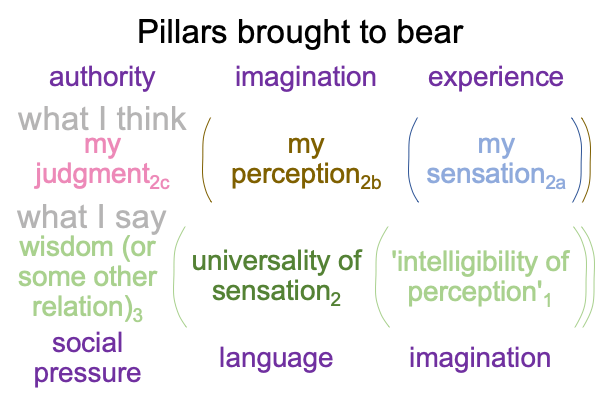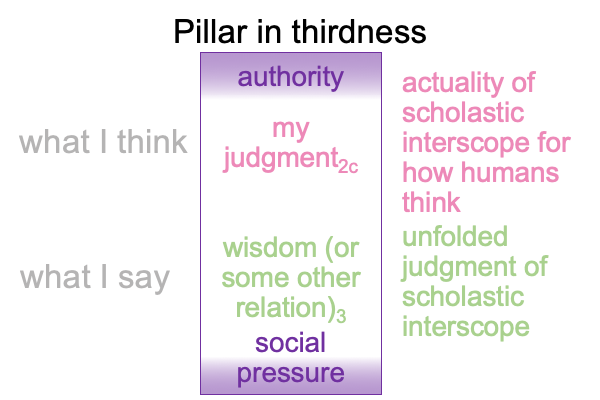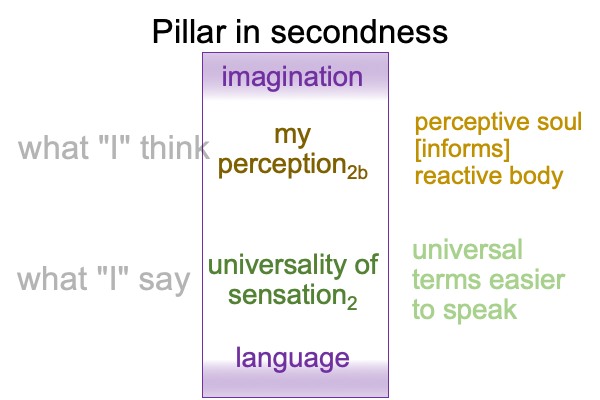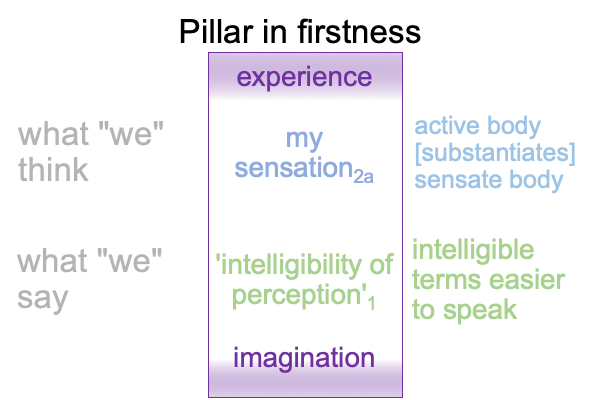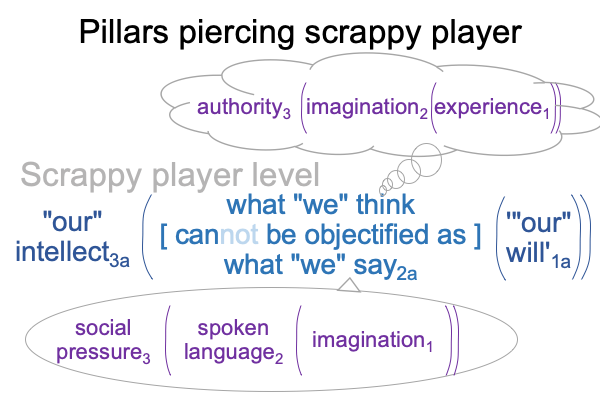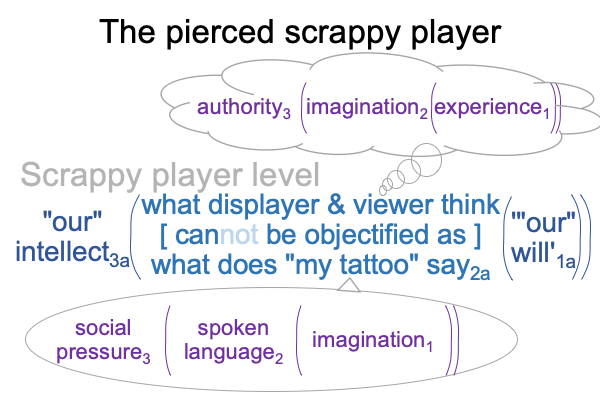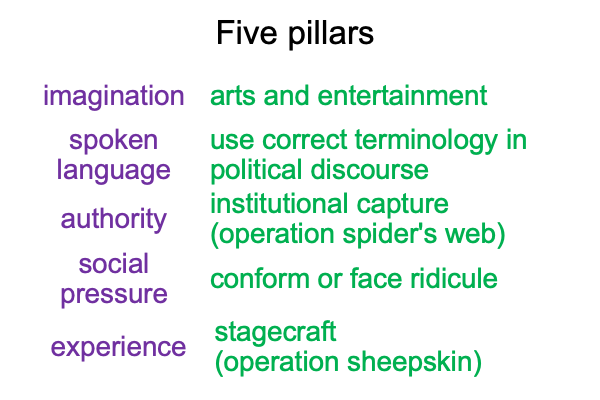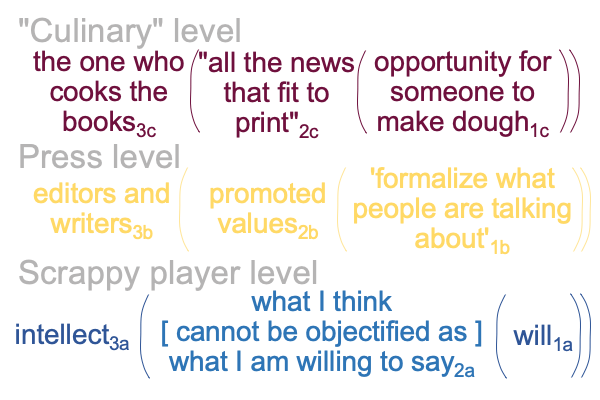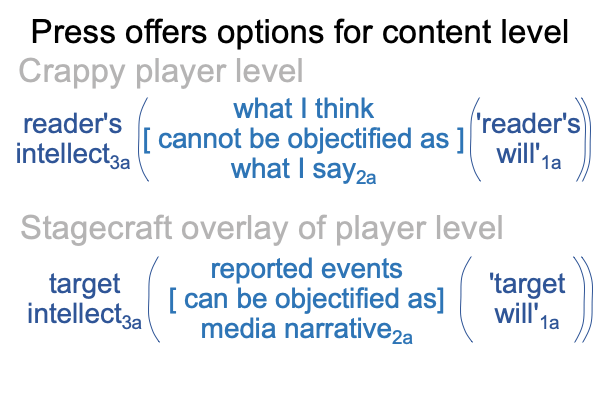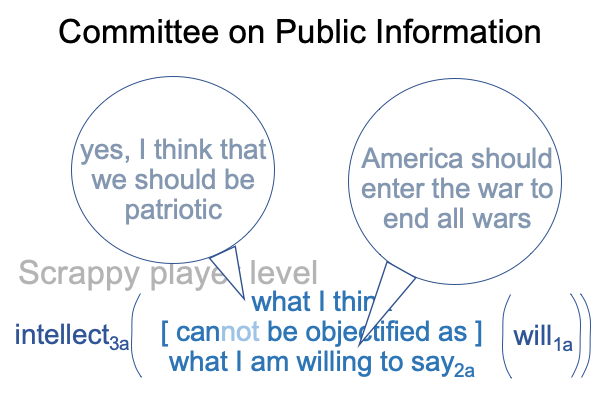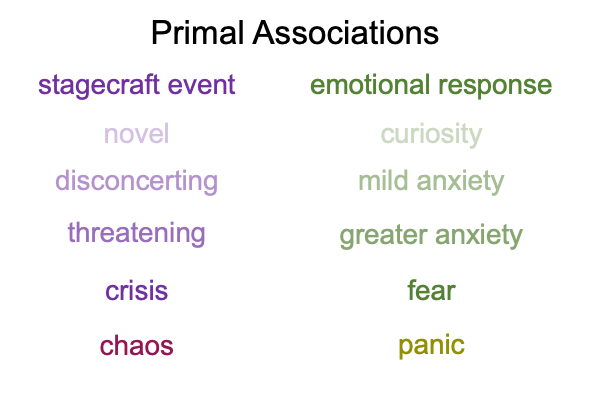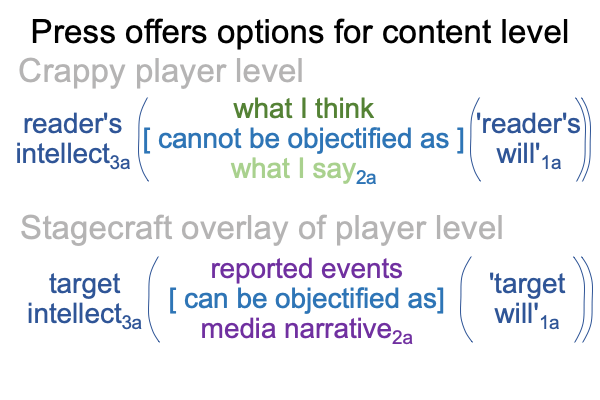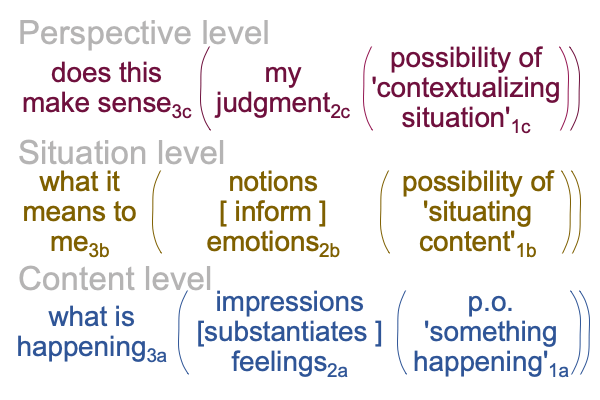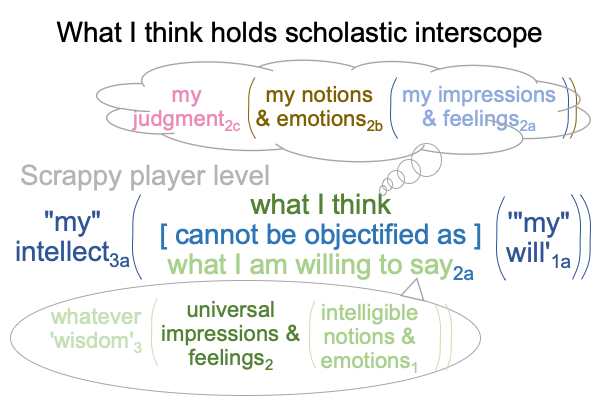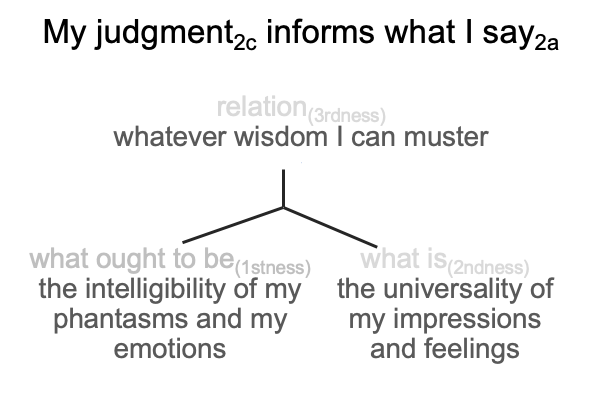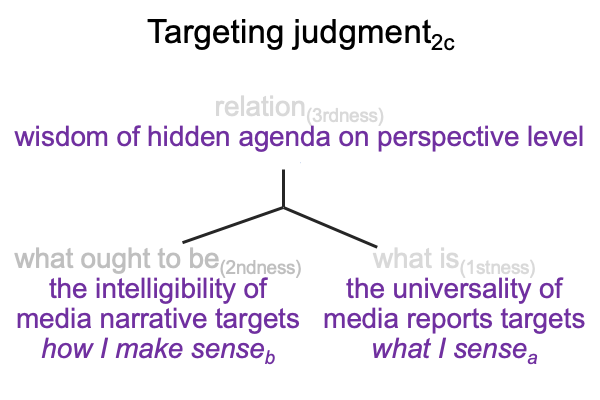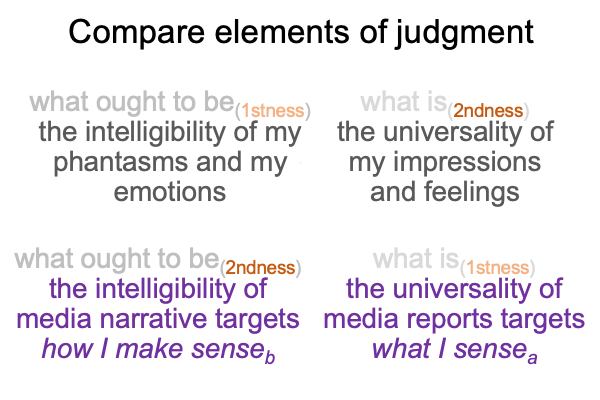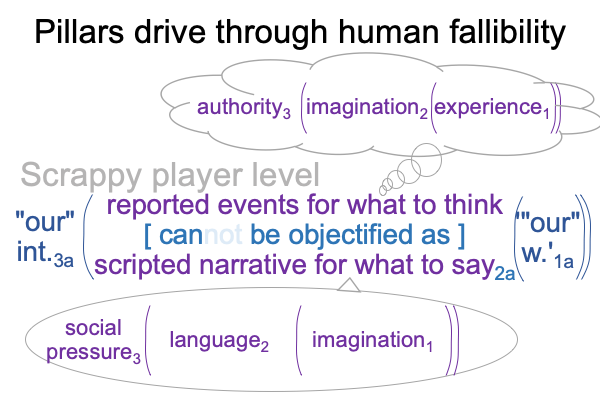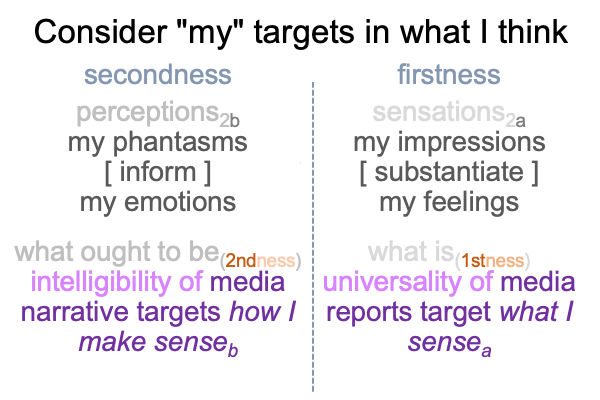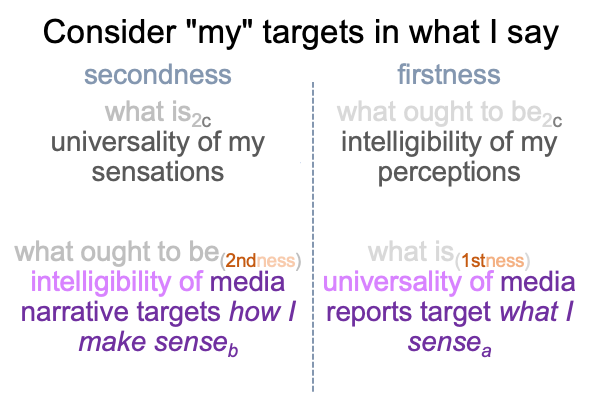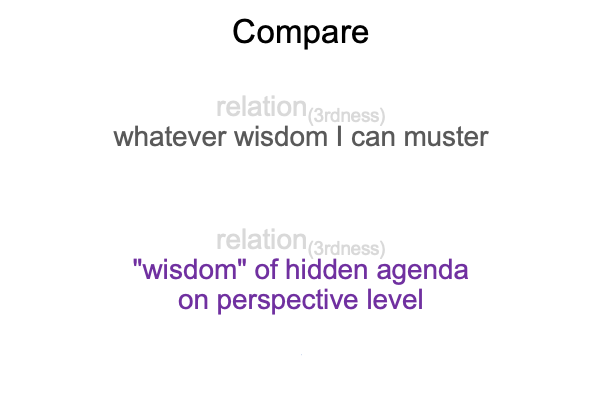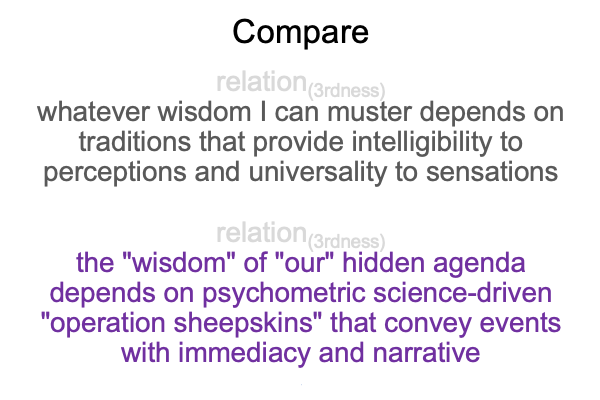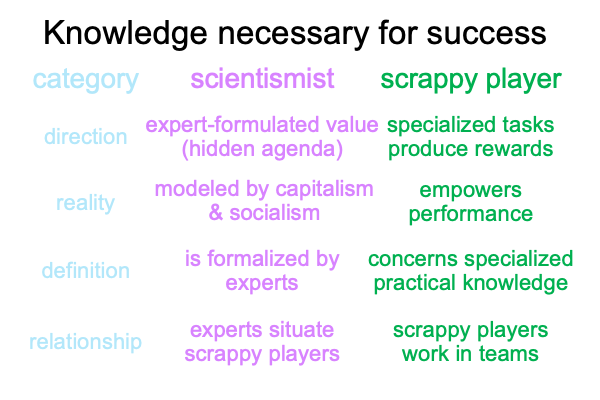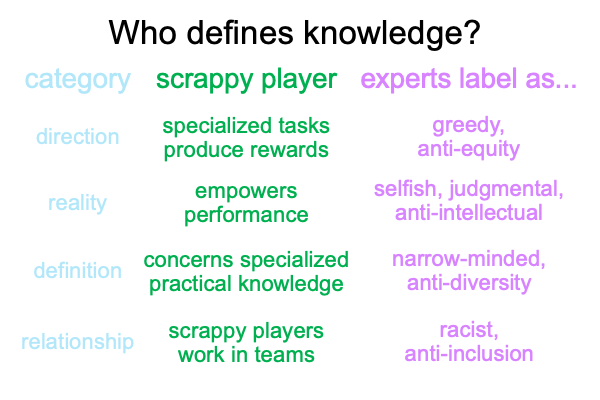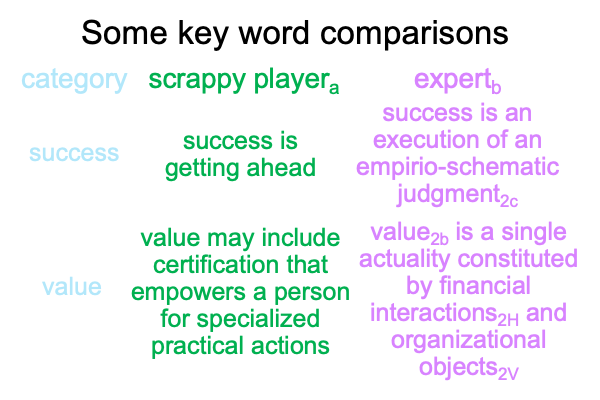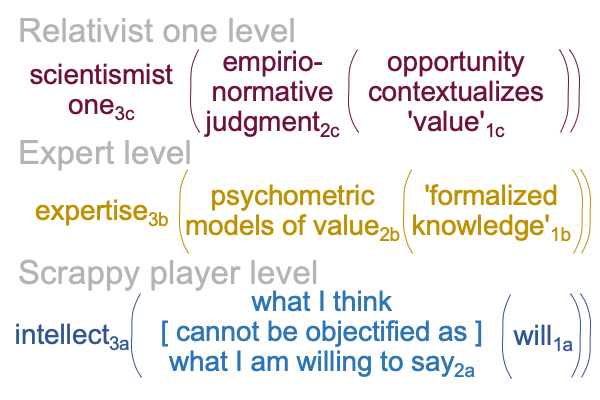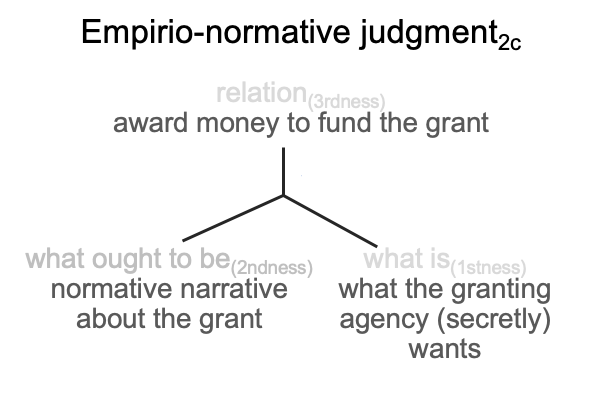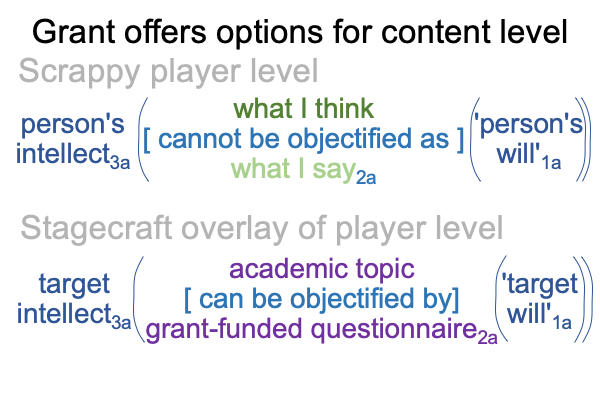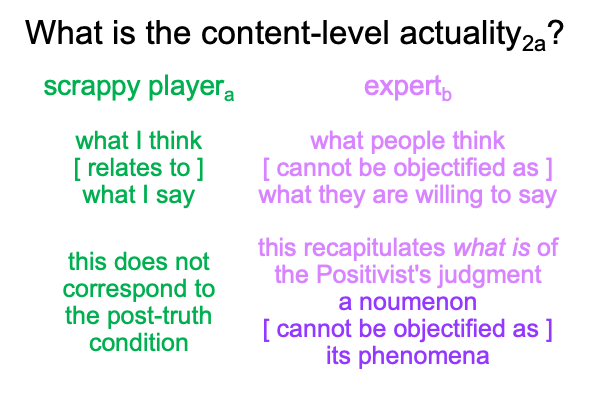Looking at Michelle Stiles’s Book (2022) “One Idea to Rule Them All” (Part 10 of 23)
0601 Needless to say, stagecraft is a rich man’s sport.
Plus, psychometrics is the science behind the sport.
0602 In chapter five, Stiles discusses why the word, “propaganda”, is damaged goods.
Creel’s success in the First World War and Edward Bernay’s success at marketing for American corporations leaves a bad taste in the mouths of the scrappy players.
0603 One sour note concerns exactly whose intellect3a and will1a constitute reason3a,1a on the scrappy player level.
Stagecraft, done well, presents the scrappy player with a “filled in” content-level nested form, ready made to swallow whole. In the figure below, “my” intellect3a and the broadcast intellect3a are confounded. So, are “my” and “the target’s” will1a.
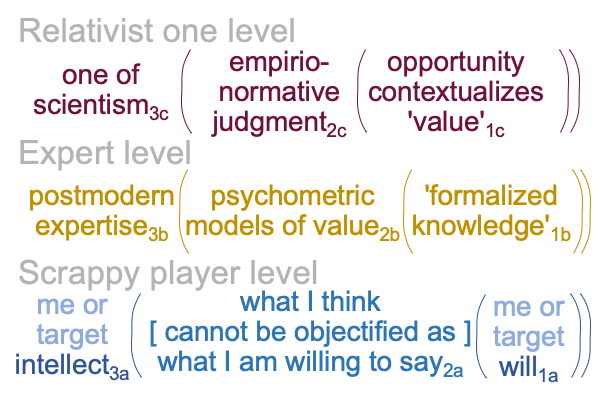
When stagecraft succeeds, my reason3a,1a becomes what it3a,1a is targeted to be.
0604 The propaganda techniques used during the First World War left many Americans feeling betrayed. They felt duped. The psychometric sciences performed so well. Too bad that the stagecraft was later shown to be exactly that.
Exactly what?
Shall I say “pure theater”? Or, should I say “deception”?
0605 I suppose that the complainers sound like Eve, after the Fall, vexed at the cunning trick that led her into error.
The serpent’s spoken words tell her precisely what to think, and she turns its propaganda into her own actions.
How stupid is that?
0606 Another sour note concerns the categorical nature of what I think compared to what I say.
A categorical shift occurs, precisely mimicking the Kantian slogan, a noumenon [cannot be objectified as] its phenomena. Both a noumenon (the thing itself) and its phenomena (its observable and measurable facets) are real elements. The contiguity between them contains a negation, so no matter how many observations and measurements one makes, one can never objectify the thing itself, which is the subject of natural experience.
0607 However, (and this point gets confusing) the noumenon and its phenomena belong to the same entity. So, the apparently real elements in Kant’s slogan are distinctions which cannot ever be separated. A noumenon does not exist without its phenomena. Phenomena do not exist without their noumenon. Yes, both labels apply to the same entity.
Got that?
0607 Kant’s slogan constitutes what is of the Positivist’s judgment.
The German philosopher, Immanuel Kant (1724-1804 AD), introduces the noumenon in order to balance an imbalance. Scientists are only interested in observations and measurements of what can be observed and measured, that is, phenomena. A century after Kant’s slogan takes shape, scientific circles argue that they should be able to dispense with the noumenon, the thing itself, altogether. Veil the noumenon with scientific models.
Can I apply this to what I think2a?
0608 Yes, the distinction between what I think and what I say compares to the distinction between a noumenon and its phenomena.
0609 What I think may be diagrammed using the scholastic interscope for how humans think. Nine elements operate simultaneously to achieve a living thing, a human thought. Imagine trying to perform that operation in a computer simulation! What I think, like a noumenon, is holistic. It is what we (humans) evolved to do. It is a subject for philosophical discourse. It is no accident that the transcendentals, including truth, come into play in the interscope for what I think.
The problem?
What I think cannot be directly observed and measured by the psychometric sciences.
0610 What I say can be observed and measured.
What I say is the unfolding of the perspective-level judgment.
The actionable judgment goes like this. Wisdom (or some other relation, thirdness) brings the universality of sensations embedded within what people say (what is, secondness) into relation with the intelligibility of perceptions (what ought to be, firstness).
The category-based nested form goes like this. The normal context of wisdom, or some other transcendental3 brings the actuality of the universality of sensation2 into relation with the potential intelligibility of perception1.
0611 The hang-up comes when looking at the content-level actuality2a.
What I think2a does not match what I say2a.
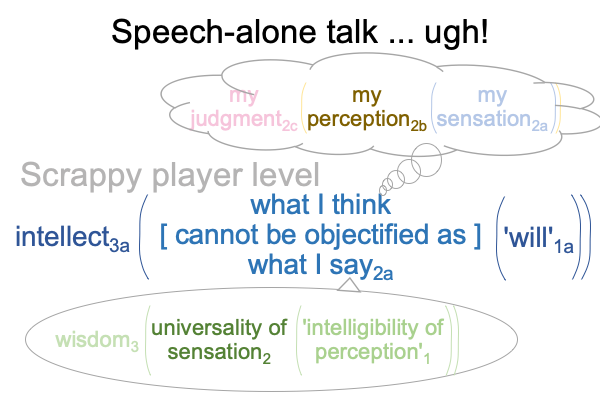
0612 The category of secondness is the realm of actuality. So, actuality should stand out in regards to what I think as well as what I say. What stands out for what I think? What stands out for what I say? They aren’t the same.
Perception concerns my perceptive soul informing my reactive body, as in phantasms generating emotions.
Sensation is all about my active body substantiating my sensate soul, as in a scent generating a feeling.
0613 So, what is the first question that a postmodern journalist asks someone about a staged event?
Of course, the first question is “How do you feel about the incident?”
Stagecraft provokes the perception. The survey question asks for the sensation.
There is a method to this madness.
For the psychometric sciences, what I think goes with the noumenon and what I say corresponds to its phenomena. The expert3b builds a model of value2b based on observations and measurements1b of phenomena2a. If the one of scientism3csees an opportunity1c for that value2b, an empirio-normative judgment2c will be executed. Another incident will occur, and now the media is already prepared with a narrative and a model, designed to overlay onto my judgments2a, my perceptions2a and my sensations2a, in order to to guide me as to what is the universal and intelligible thing to do3a.
0614 Twenty years after the end of the First World War, and at the opening of the Second World War, concerned Americans establish an Institute of Propaganda Analysis.
They first try to sift good from bad propaganda.
That does not work.
America enters the Second Battle of the Enlightenment Gods: The Hot War Among Fraternal Ideologies (1938-1945).

